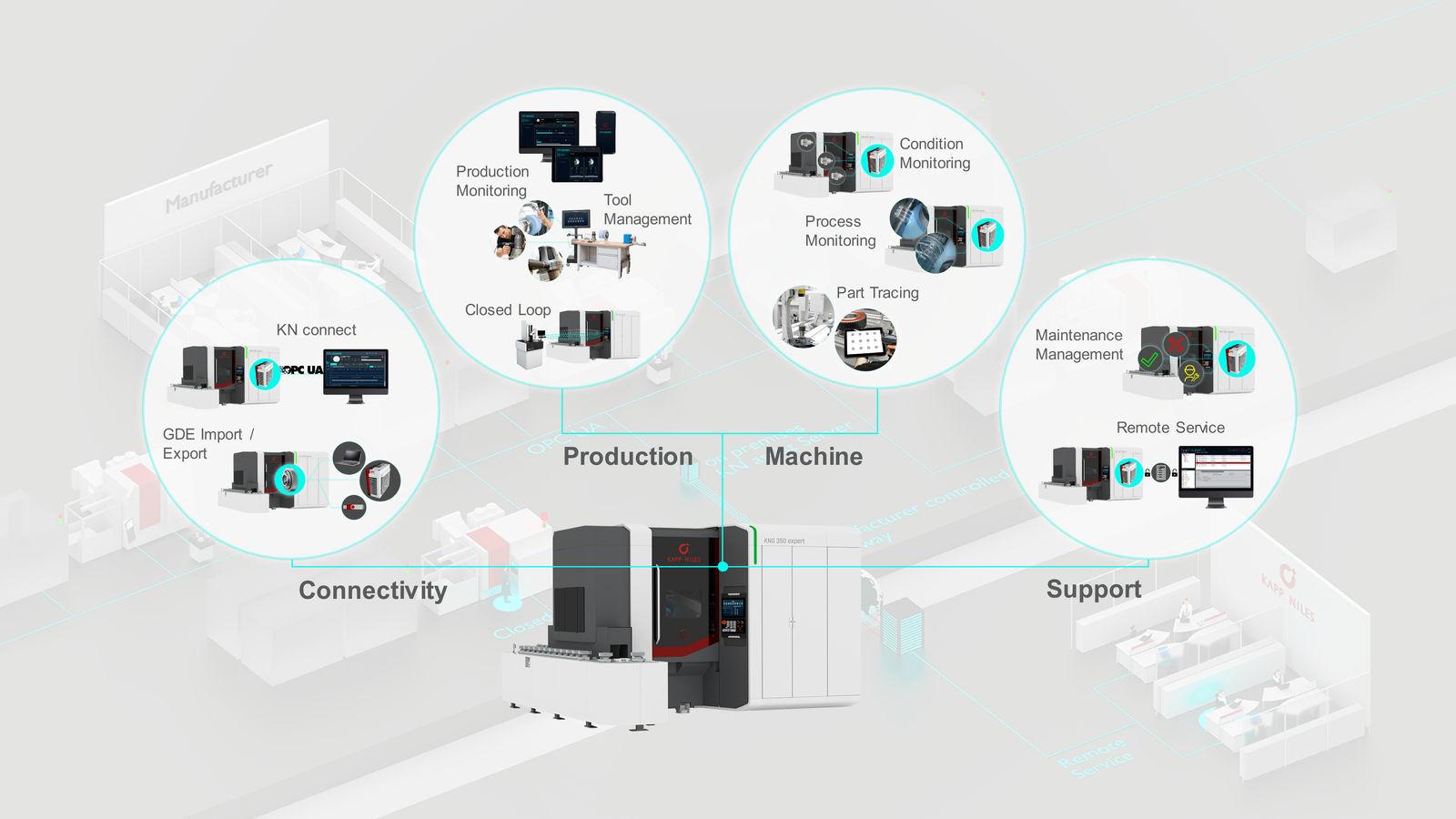The Kapp Niles Process Monitoring System analyses the grinding and dressing process. The tool state is monitored and an evaluation of ripples or orders on the component is carried out. Based on the analysed data, the machining process is determined and visualized at the HMI. By means of adjustable limits, messages indicating deviations are issued at an early stage. An interface offers the possibility of providing data via a partial tracing to each manufactured workpiece. Data outside the machine can also be analysed in detail via export functions. (See Figure 3)
 Figure 3: Export functions facilitate the analysis of machine data Figure 3: Export functions facilitate the analysis of machine data |
Andreas Paatz, Head of Division Service and Tools at Kapp Niles, explains: "This system ensures a comprehensive examination of relevant features during the grinding and dressing process. As a result, errors or trends can be detected at an early stage and scrap and reworking percentage can be reduced. By monitoring the machining process, conclusions can also be drawn about the condition of the machine. A further advantage is that a removal of noisy workpieces after the machining process is made possible. By means of partial tracing, it is possible to detect critical workpieces also retroactively. Since the number of workpieces to be subsequently measured can be reduced, time and cost savings are achieved."
From prevention to prediction
If an unplanned machine shutdown occurs, it can have a large impact on various factors, such as productivity and on the adherence to deadlines, depending on the cause, and ultimately entail additional costs. The Kapp Niles Condition Monitoring System monitors the wear condition of the linear and rotary axes of the processing machine. By means of specific reference runs, the condition is recorded during operation of the machine. The degree of wear of the axes is visually shown on the HMI of the machine. In addition to a forecast of the service life, pre-set limits are used to output trends on the machine. Interfaces for the transmission of relevant data to further customer-specific production systems are available. Furthermore, the data can be supplied to each manufactured workpiece via a partial tracing. In analogy to the process monitoring system, the machine is equipped with additional sensors and a powerful IPC for evaluating the recorded data for monitoring the axes. (See Figure 4)
| |
Figure 4: Powerful IPC is used for monitoring |
Andreas Paatz: "The aim is to significantly reduce unplanned machine downtimes. This allows better planning of maintenance intervals and prevents unnecessary or premature replacement of machine components. This is due to the fact that fewer wear parts have to be kept in stock and can be ordered on a condition-based basis. The trend in modern production plants is towards condition-oriented maintenance and repair. Kapp Niles offers a powerful product here."
Make maintenance transparent
Unforeseen maintenance work makes life difficult. Unpredictable production downtime can lead to reduced productivity and increased costs. If maintenance is necessary, missing information leads to additional expenditure.
The KAPP NILES Maintenance Manager displays all maintenance plans and instructions in digital form. The database provides complete maintenance management with triggers, consumables, time expenditures, responsibilities and priorities. This enables usage-based maintenance. A traffic light function indicates when maintenance is due. All activities carried out are stored in the asset archive.
This archive (see Figure 5) is used to support the planning of maintenance processes.
 Figure 5: Planning tool for maintenance processes Figure 5: Planning tool for maintenance processes |
Authors
Andreas Paatz, Head of Division Service and Tools at KAPP NILES
André Wetz, Product Manager at KAPP NILES
Contact external for publication
KAPP NILES GmbH & Co. KG
Tel.: +49 (0)9561 / 866-0
info@kapp-niles.com
www.kapp-niles.com
Contact INTERNAL, ONLY FOR EDITORIAL QUERIES
Carola Rehder, Manager, Communication and Marketing at Kapp Niles
Callenberger Str. 52, 96540 Coburg
Tel.: +49 (0)9561 / 866-1250
carola.rehder@kapp-niles.com












